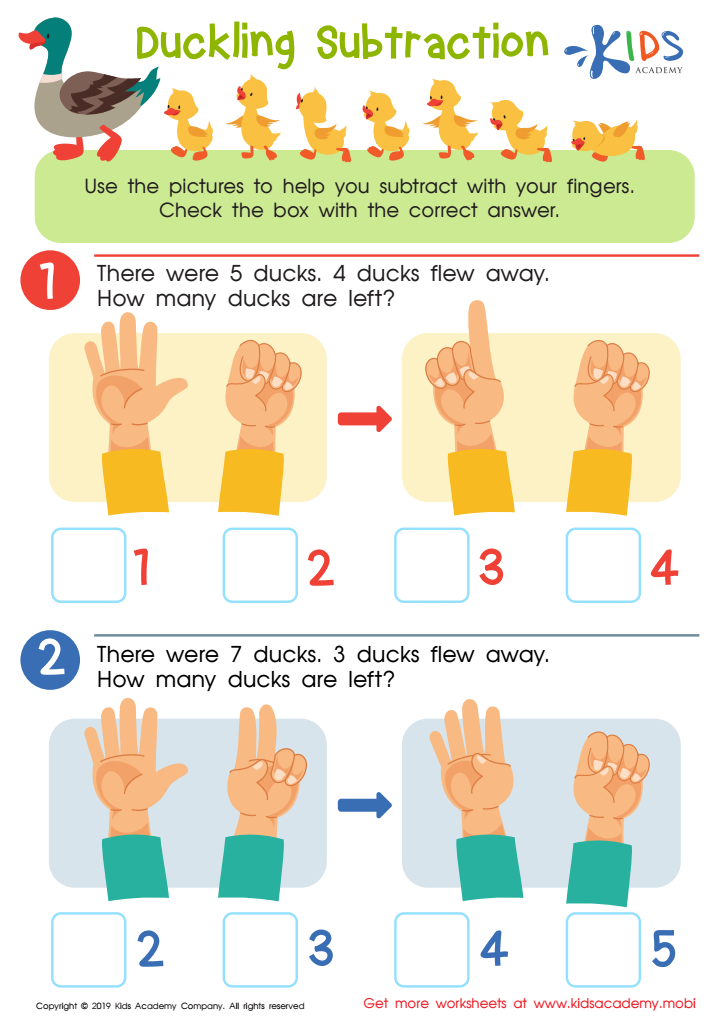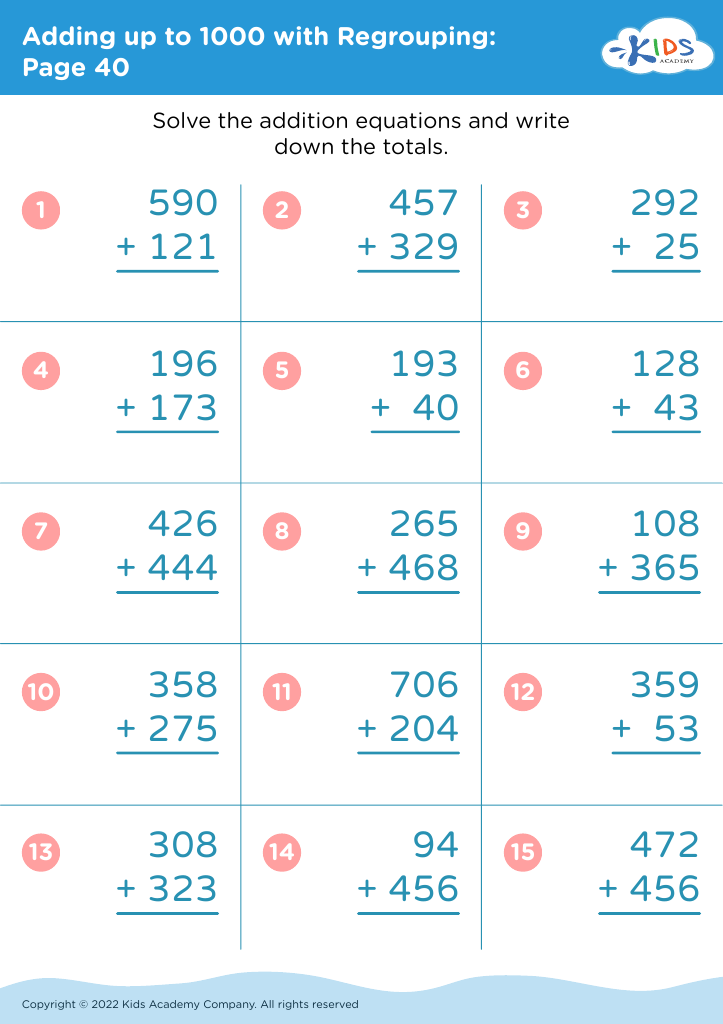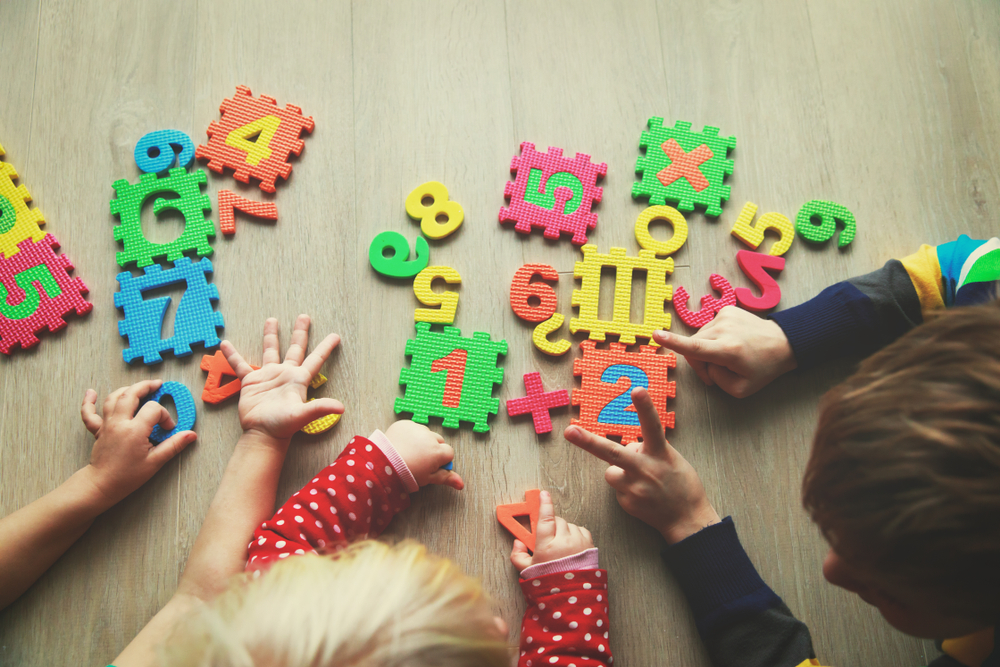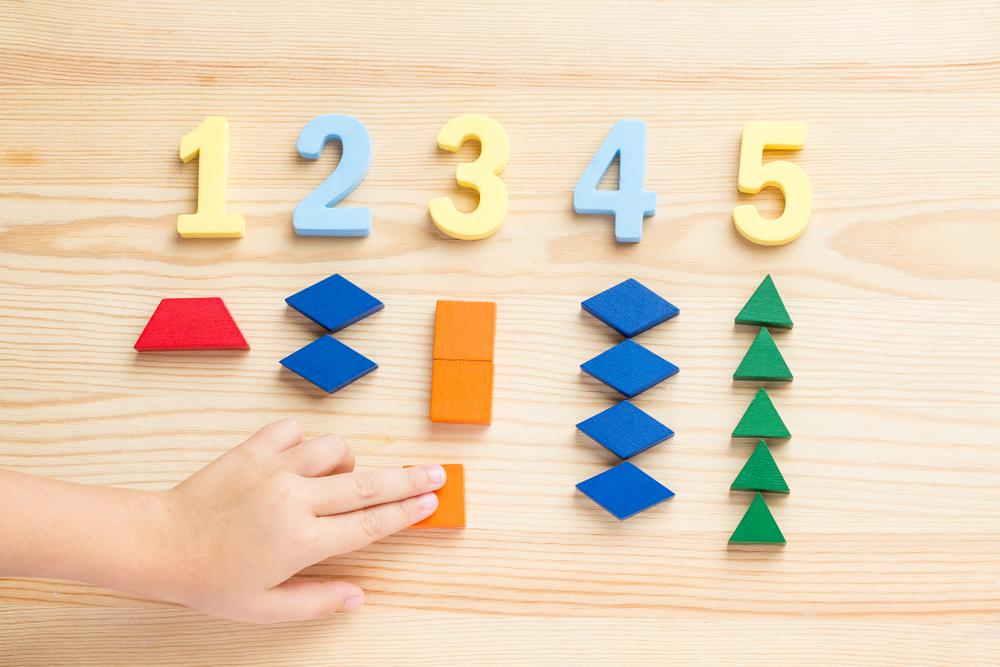Understand number relationships Addition & Subtraction Worksheets for Ages 5-8
3 filtered results
-
From - To
Explore our "Understand Number Relationships: Addition & Subtraction" worksheets, specifically designed for children aged 5-8! These engaging resources promote a deeper comprehension of how numbers interact through addition and subtraction. By utilizing visual aids and hands-on activities, students will learn to identify number patterns, recognize outcomes, and strengthen their calculation skills. Our worksheets are tailored to support different learning styles, making them perfect for classrooms or home learning. Help your child build a solid foundation in math with these fun, interactive worksheets that make mastering number relationships exciting and accessible! Start empowering your young learner today!


Duckling Subtraction Worksheet
Understanding number relationships in addition and subtraction is crucial for children aged 5-8 as it lays the foundation for their mathematical development. At this stage, children are not just learning to compute but are beginning to grasp the underlying concepts of how numbers interact, which enhances their problem-solving skills and critical thinking.
When children realize that addition is about combining quantities and subtraction is about taking away, they start to form a mental number line. This understanding helps them develop strategies for solving problems, such as estimating before calculating. Furthermore, recognizing patterns and relationships among numbers fosters greater numerical fluency, allowing children to tackle more complex concepts in later grades with confidence.
Teachers and parents play a vital role in this process by providing rich, engaging activities that promote exploration of these concepts through play and real-life examples. Instead of rote memorization, focusing on relationships helps children see mathematics as a meaningful and dynamic subject, reducing math anxiety and boosting self-esteem. Ultimately, a strong grasp of addition and subtraction relationships equips children with essential skills that will benefit them throughout their academic journey and in everyday life. Encouragement and support from adults can make a significant difference in this learning process.


 Assign to My Students
Assign to My Students
















